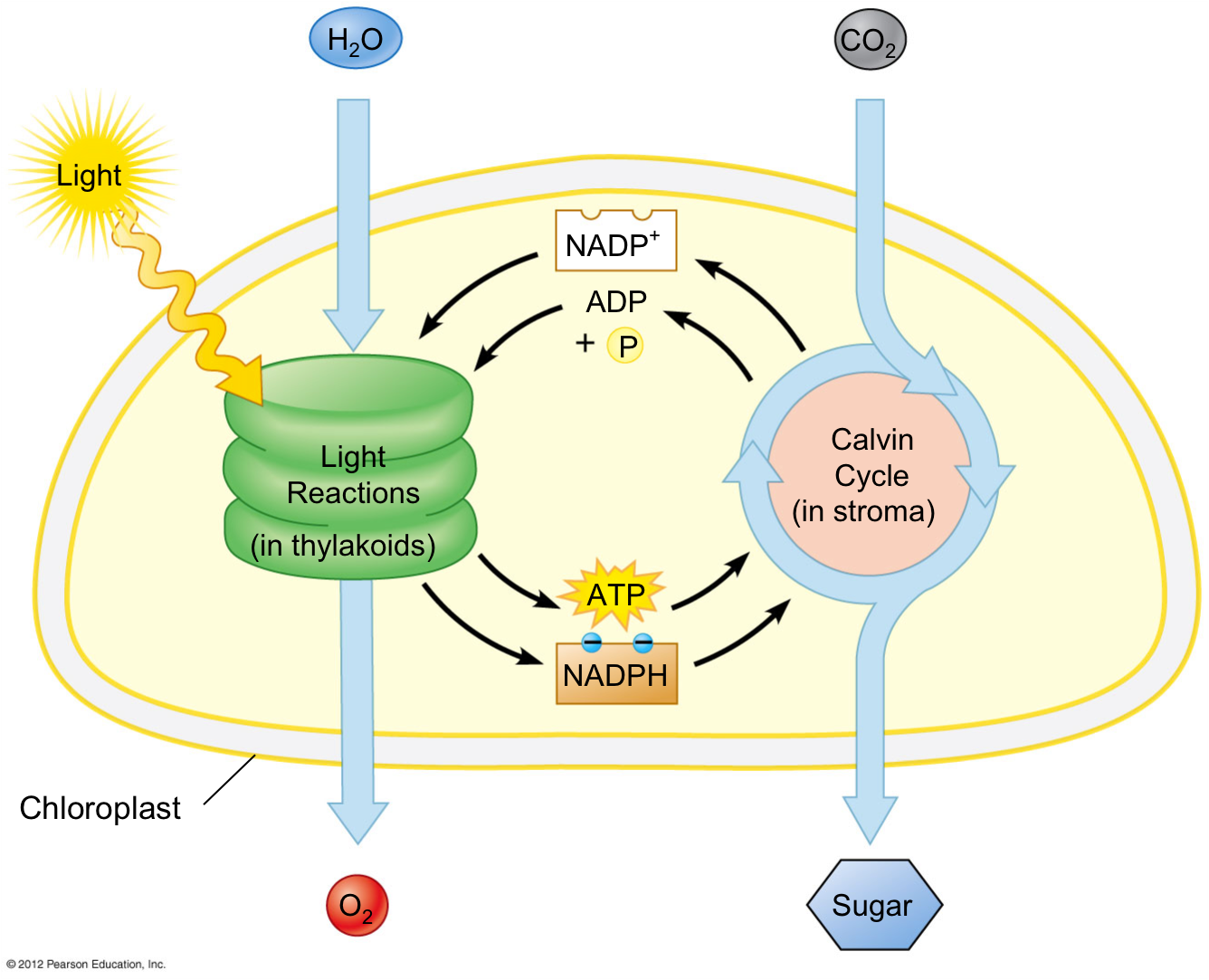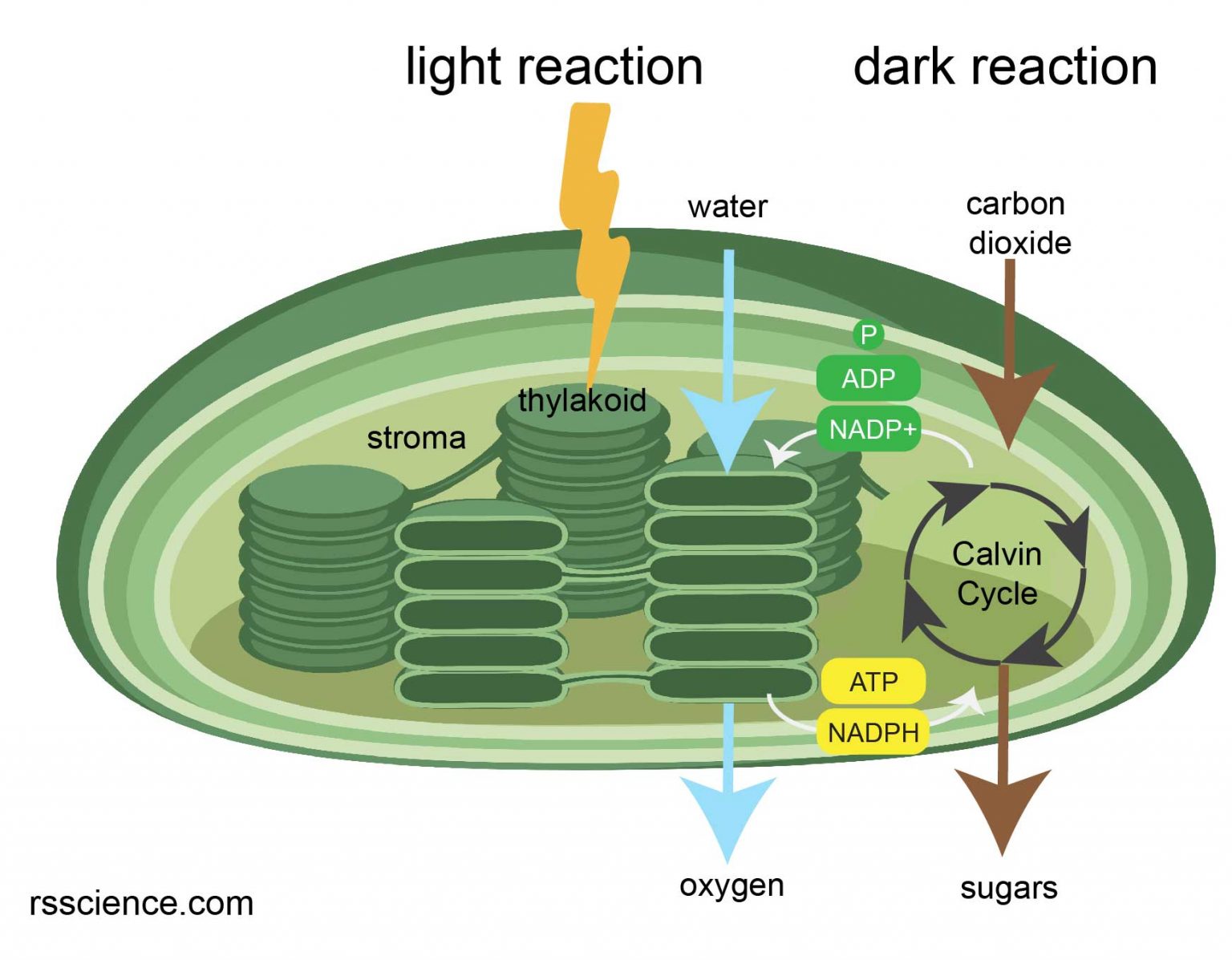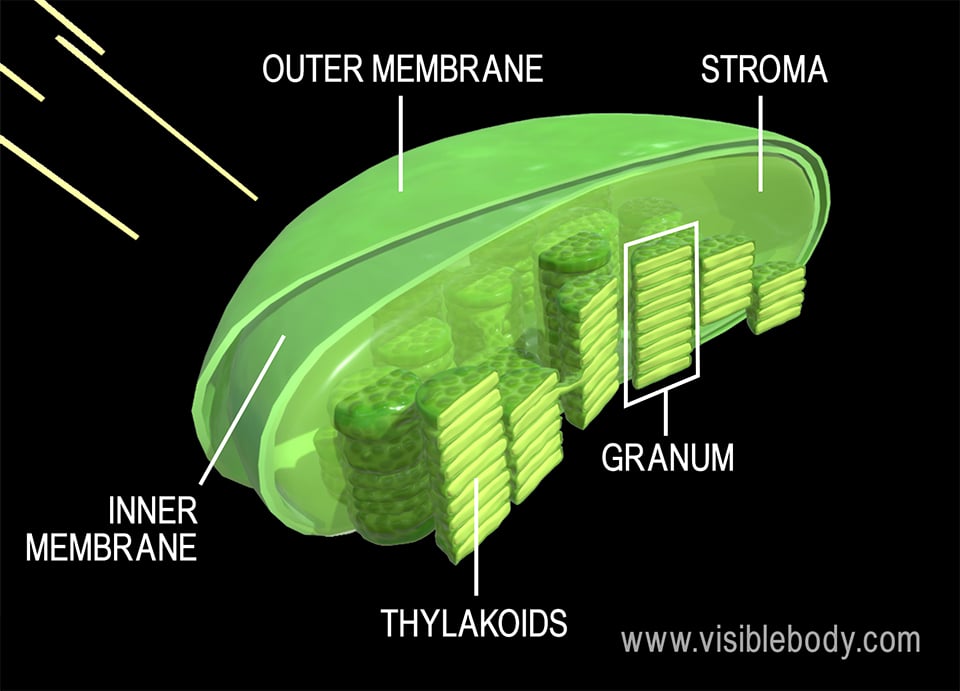Is the stroma an enzymes – Is the stroma an enzyme? While the term “stroma” might not immediately conjure images of enzymatic activity, the reality is that the stroma, a vital component of various organelles like chloroplasts and mitochondria, plays a crucial role in supporting and facilitating numerous enzymatic reactions. The stroma acts as a bustling hub where metabolic pathways unfold, powered by a diverse array of enzymes that orchestrate the intricate dance of life within the cell.
Imagine the stroma as a dynamic workshop filled with specialized tools, each with a unique function. These tools are the enzymes, and the workshop itself is the stroma, providing the environment and infrastructure for these enzymes to work their magic. From energy production to the synthesis of essential molecules, the stroma is a central player in maintaining cellular function and ensuring the survival of the organism.
The Stroma

The stroma is a vital component of various cellular structures, including chloroplasts in plants and the supporting framework of various tissues. It provides a dynamic environment that facilitates essential cellular processes.
Stroma Composition
The stroma is a complex mixture of proteins, enzymes, and other molecules suspended in a gel-like matrix. It contains a high concentration of water, along with various organic and inorganic compounds. Key components include:
- Enzymes: The stroma houses a diverse array of enzymes crucial for metabolic processes, including photosynthesis in chloroplasts. These enzymes catalyze reactions involved in carbon fixation, carbohydrate synthesis, and other essential pathways.
- DNA: Chloroplasts have their own DNA, known as chloroplast DNA (cpDNA), which is located within the stroma. cpDNA encodes proteins essential for chloroplast function.
- Ribosomes: Stroma contains ribosomes, the protein synthesis machinery, responsible for translating cpDNA into proteins.
- Grana: In chloroplasts, the stroma surrounds stacks of thylakoid membranes called grana. Grana are the sites of light-dependent reactions in photosynthesis.
- Starch Granules: Stroma can store starch granules, the primary form of carbohydrate storage in plants.
Stroma Function
The stroma plays a critical role in supporting cellular processes, including:
- Photosynthesis: In chloroplasts, the stroma is the site of the Calvin cycle, a series of reactions that convert carbon dioxide into sugars using energy from light-dependent reactions.
- Protein Synthesis: Stroma contains ribosomes and other components required for protein synthesis, enabling the production of proteins essential for chloroplast function.
- Metabolic Reactions: The stroma provides a suitable environment for various metabolic reactions, including the synthesis of amino acids, fatty acids, and other essential molecules.
- Structural Support: The stroma acts as a framework, providing structural support and organization within the organelle or tissue.
Stroma Structural Features
The stroma’s structure facilitates its function:
- Gel-like Matrix: The stroma’s gel-like consistency provides a suitable environment for the suspension of enzymes and other molecules, facilitating their interaction and efficient catalysis of reactions.
- Interconnected Network: The stroma forms an interconnected network, allowing for the movement of molecules and the exchange of materials between different parts of the organelle or tissue.
- Thylakoid Membranes: In chloroplasts, the stroma surrounds the thylakoid membranes, allowing for efficient transfer of energy and molecules between the two compartments.
Stroma in Different Cell Types
The composition and function of the stroma can vary depending on the cell type. For example:
- Chloroplasts: In chloroplasts, the stroma is highly specialized for photosynthesis, containing enzymes and other molecules required for carbon fixation and carbohydrate synthesis.
- Mitochondria: Mitochondria also have a stroma-like matrix, but it is called the mitochondrial matrix. The mitochondrial matrix contains enzymes involved in cellular respiration and other metabolic processes.
- Connective Tissues: In connective tissues, the stroma provides structural support and helps to organize the cells and fibers within the tissue.
Enzymes and their Role in the Stroma
The stroma, the fluid-filled space within the chloroplast, is a dynamic environment where numerous metabolic reactions occur. Enzymes play a crucial role in facilitating these reactions, acting as biological catalysts that accelerate specific biochemical processes.
Types of Enzymes Present in the Stroma
The stroma is teeming with a diverse array of enzymes, each with a specific function in the metabolic pathways of photosynthesis. These enzymes can be broadly categorized based on their role in different stages of photosynthesis:
- Carbon Fixation Enzymes: These enzymes are responsible for capturing carbon dioxide from the atmosphere and incorporating it into organic molecules. Key examples include:
- Ribulose-1,5-bisphosphate carboxylase/oxygenase (Rubisco): This enzyme catalyzes the first step of the Calvin cycle, where carbon dioxide is fixed into an unstable six-carbon compound that quickly breaks down into two molecules of 3-phosphoglycerate. Rubisco is arguably the most abundant enzyme on Earth and is crucial for carbon fixation.
- Phosphoenolpyruvate carboxylase (PEP carboxylase): This enzyme plays a role in C4 photosynthesis, where carbon dioxide is initially fixed into a four-carbon compound before being transferred to the Calvin cycle. PEP carboxylase has a higher affinity for carbon dioxide than Rubisco, allowing C4 plants to thrive in environments with lower carbon dioxide concentrations.
- Calvin Cycle Enzymes: The Calvin cycle, a series of reactions that convert carbon dioxide into glucose, involves a multitude of enzymes. Some notable examples include:
- Glyceraldehyde-3-phosphate dehydrogenase (GAPDH): This enzyme catalyzes the reduction of 1,3-bisphosphoglycerate to glyceraldehyde-3-phosphate, a key step in the Calvin cycle.
- Fructose-1,6-bisphosphatase (FBPase): This enzyme catalyzes the hydrolysis of fructose-1,6-bisphosphate to fructose-6-phosphate, a crucial step in the regeneration of ribulose-1,5-bisphosphate, the primary carbon acceptor in the Calvin cycle.
- Starch Synthesis Enzymes: The stroma also contains enzymes involved in the synthesis of starch, the primary storage form of carbohydrates in plants. These enzymes include:
- ADP-glucose pyrophosphorylase: This enzyme catalyzes the formation of ADP-glucose, a precursor to starch synthesis.
- Starch synthase: This enzyme catalyzes the elongation of starch chains by adding glucose units to existing starch molecules.
The Stroma as a Site of Biochemical Reactions: Is The Stroma An Enzymes

The stroma, the fluid-filled region within the chloroplast, is a bustling hub of biochemical activity. It houses a complex network of enzymes and metabolic pathways responsible for essential processes, particularly those related to photosynthesis. This intricate machinery within the stroma plays a pivotal role in capturing light energy, converting it into chemical energy, and utilizing this energy for the synthesis of organic molecules.
The Role of the Stroma in Energy Production and Utilization
The stroma is a key player in the intricate dance of energy production and utilization within the chloroplast. The light-dependent reactions of photosynthesis, occurring in the thylakoid membranes, generate ATP and NADPH. These energy-rich molecules then shuttle to the stroma, fueling the carbon fixation reactions of the Calvin cycle. The Calvin cycle, a series of enzymatic reactions, utilizes the energy from ATP and NADPH to convert carbon dioxide into glucose, the primary energy source for the plant.
The Interplay Between the Stroma and Other Cellular Compartments in Metabolic Pathways
The stroma, while a vital center of photosynthesis, is not isolated. It actively interacts with other cellular compartments, participating in a complex network of metabolic pathways. The stroma communicates with the cytoplasm, exchanging molecules like sugars and amino acids. It also interacts with the mitochondria, the powerhouse of the cell, through the transfer of energy-rich molecules.
A Diagram Illustrating Major Biochemical Reactions Occurring in the Stroma
The stroma is a dynamic environment where numerous biochemical reactions take place. Here is a simplified diagram illustrating the major reactions:“` [Sunlight] ↓ Thylakoid membrane → [ATP and NADPH] ↓ [Stroma] ↓ [Calvin Cycle] ↓ [Glucose] ↓ [Other metabolic pathways]“`This diagram highlights the flow of energy and molecules within the stroma, emphasizing its role as a central hub for photosynthesis and other metabolic processes.
The Stroma in Different Organelles

The stroma, a fluid-filled region within certain organelles, plays a crucial role in various metabolic processes. Its composition and function vary depending on the organelle it resides in. Two prominent examples are the stroma of chloroplasts and mitochondria, each with unique characteristics and roles in cellular function.
Comparison of Stroma in Chloroplasts and Mitochondria, Is the stroma an enzymes
The stroma of chloroplasts and mitochondria, while sharing some similarities, exhibit distinct features that reflect their specific functions.
- Location: The stroma in chloroplasts is found within the inner membrane, while the mitochondrial stroma is located within the inner membrane of the mitochondria. This distinction is crucial for their respective roles in photosynthesis and cellular respiration.
- Composition: Both stroma contain enzymes, ribosomes, and DNA, but the specific enzymes present differ. The chloroplast stroma houses enzymes involved in the Calvin cycle, responsible for carbon fixation during photosynthesis. The mitochondrial stroma, on the other hand, contains enzymes involved in the Krebs cycle and oxidative phosphorylation, key steps in cellular respiration.
- Function: The chloroplast stroma is the site of carbon fixation, where carbon dioxide is converted into sugars using energy from sunlight. The mitochondrial stroma, in contrast, is the site of ATP production through the breakdown of glucose, a process known as cellular respiration.
The Unique Functions of Stroma in Each Organelle
The stroma in chloroplasts and mitochondria exhibit specialized functions tailored to their respective organelles.
- Chloroplast Stroma: The stroma in chloroplasts is a dynamic environment where several key processes occur, including:
- Calvin Cycle: The stroma houses the enzymes responsible for the Calvin cycle, where carbon dioxide is fixed into organic molecules, ultimately producing glucose. This process is vital for plant growth and energy production.
- Starch Synthesis: The stroma is also involved in the synthesis of starch, a storage form of carbohydrates, which can be broken down later to provide energy.
- Protein Synthesis: The stroma contains ribosomes and DNA, allowing for the synthesis of proteins essential for chloroplast function.
- Mitochondrial Stroma: The stroma in mitochondria plays a crucial role in cellular respiration, the process that converts glucose into ATP, the primary energy currency of cells. This involves several key steps:
- Krebs Cycle: The stroma houses the enzymes for the Krebs cycle, a series of reactions that break down pyruvate, a product of glycolysis, into carbon dioxide and electron carriers.
- Oxidative Phosphorylation: The stroma also houses the enzymes and components for oxidative phosphorylation, a process that uses the electron carriers generated in the Krebs cycle to produce ATP. This process is the primary source of ATP in most cells.
Interaction of Stroma with Other Structures
The stroma in both chloroplasts and mitochondria interacts with other structures within these organelles, facilitating their functions.
- Chloroplast Stroma: The stroma interacts with the thylakoid membranes, which are stacked structures within the chloroplast. The thylakoid membranes contain chlorophyll, the pigment responsible for capturing light energy. This energy is then transferred to the stroma, where it is used to power the Calvin cycle.
- Mitochondrial Stroma: The mitochondrial stroma interacts with the inner mitochondrial membrane, which contains the electron transport chain and ATP synthase, crucial components for oxidative phosphorylation. The electron carriers produced in the Krebs cycle are transported to the inner mitochondrial membrane, where they drive the production of ATP.
Comparison of Key Features of Stroma in Chloroplasts and Mitochondria
| Feature | Chloroplast Stroma | Mitochondrial Stroma |
|---|---|---|
| Location | Within the inner membrane of chloroplasts | Within the inner membrane of mitochondria |
| Composition | Enzymes of the Calvin cycle, ribosomes, DNA, starch granules | Enzymes of the Krebs cycle, oxidative phosphorylation, ribosomes, DNA |
| Function | Carbon fixation, starch synthesis, protein synthesis | ATP production through cellular respiration |
| Interaction with other structures | Interacts with thylakoid membranes for energy transfer | Interacts with inner mitochondrial membrane for electron transport and ATP synthesis |
The Stroma in Disease and Pathology
The stroma, a vital component of many tissues and organs, plays a crucial role in maintaining cellular function and tissue integrity. However, disruptions in stromal structure and function can lead to various diseases and pathological conditions. Understanding the role of the stroma in disease progression is essential for developing effective therapeutic strategies.
Stromal Dysfunction in Cancer
Alterations in the stromal microenvironment are a hallmark of cancer development and progression. Cancer cells often manipulate the stroma to promote their own growth, invasion, and metastasis.
- Increased Stromal Density: In many cancers, the stroma becomes denser and more fibrous, creating a favorable environment for tumor growth and invasion. This increased density can impede the delivery of oxygen and nutrients to normal cells, while promoting the growth of cancer cells.
- Stromal Remodeling: Cancer cells can induce the production of enzymes, such as matrix metalloproteinases (MMPs), that degrade the extracellular matrix, facilitating tumor invasion and metastasis. This remodeling process can also lead to the formation of new blood vessels (angiogenesis), providing the tumor with the necessary blood supply to grow.
- Immune Cell Infiltration: The stroma is home to a diverse population of immune cells, which can either suppress or promote tumor growth. In some cases, cancer cells can recruit immunosuppressive cells to the tumor microenvironment, suppressing the immune system’s ability to fight the cancer.
Stromal Dysfunction in Fibrotic Diseases
Fibrosis is characterized by excessive deposition of extracellular matrix components, leading to tissue scarring and impaired organ function. Stromal dysfunction plays a central role in the development of fibrosis in various organs, including the lungs, liver, and kidneys.
- Activation of Fibroblasts: Fibroblasts, the primary cells responsible for producing extracellular matrix components, become activated in response to injury or inflammation. These activated fibroblasts produce excessive amounts of collagen and other matrix proteins, leading to fibrosis.
- Dysregulated Matrix Remodeling: In fibrotic diseases, the balance between matrix synthesis and degradation is disrupted. The excessive deposition of matrix components is not adequately counterbalanced by matrix degradation, leading to progressive fibrosis.
- Impaired Tissue Regeneration: The excessive deposition of matrix proteins in fibrotic tissues can impede tissue regeneration and repair, contributing to chronic organ dysfunction.
Stromal Dysfunction in Inflammatory Diseases
Inflammation is a complex process involving the activation of immune cells and the release of inflammatory mediators. Stromal dysfunction can contribute to the development and progression of inflammatory diseases by altering the inflammatory response and disrupting tissue homeostasis.
- Increased Inflammatory Cell Infiltration: The stroma can serve as a conduit for inflammatory cells to infiltrate tissues. In inflammatory diseases, the stroma may be altered to attract and retain inflammatory cells, perpetuating the inflammatory response.
- Production of Inflammatory Mediators: Stromal cells, such as fibroblasts and endothelial cells, can produce inflammatory mediators, such as cytokines and chemokines, that contribute to the inflammatory cascade.
- Altered Blood Vessel Permeability: Changes in the stromal microenvironment can affect blood vessel permeability, allowing for the leakage of fluids and proteins into the surrounding tissues, exacerbating inflammation.
The stroma, far from being a passive bystander, is an active participant in cellular processes, hosting a diverse cast of enzymes that drive essential metabolic pathways. By understanding the structure, function, and intricate interactions within the stroma, we gain valuable insights into the fundamental mechanisms that govern life at the cellular level. This knowledge is not only essential for unraveling the complexities of biological systems but also holds immense potential for developing innovative therapeutic strategies to address various diseases and conditions.
Questions Often Asked
What is the stroma’s role in photosynthesis?
The stroma in chloroplasts is the site of the Calvin cycle, a series of reactions that use energy from light-dependent reactions to convert carbon dioxide into glucose, the primary source of energy for plants.
What are some examples of enzymes found in the stroma?
The stroma contains a wide range of enzymes, including Rubisco (ribulose-1,5-bisphosphate carboxylase/oxygenase), which is essential for carbon fixation in photosynthesis, and ATP synthase, which generates ATP, the energy currency of the cell.
How does the stroma interact with other cellular compartments?
The stroma communicates with other cellular compartments through the transport of molecules and signals. For instance, the stroma receives energy from the thylakoid membrane, where light-dependent reactions occur, and exports glucose to other parts of the cell.
What are some diseases that affect the stroma?
Dysfunction of the stroma can contribute to various diseases, including diabetes, cancer, and mitochondrial disorders. For example, defects in mitochondrial stroma can lead to impaired energy production and contribute to the development of neurodegenerative diseases.






